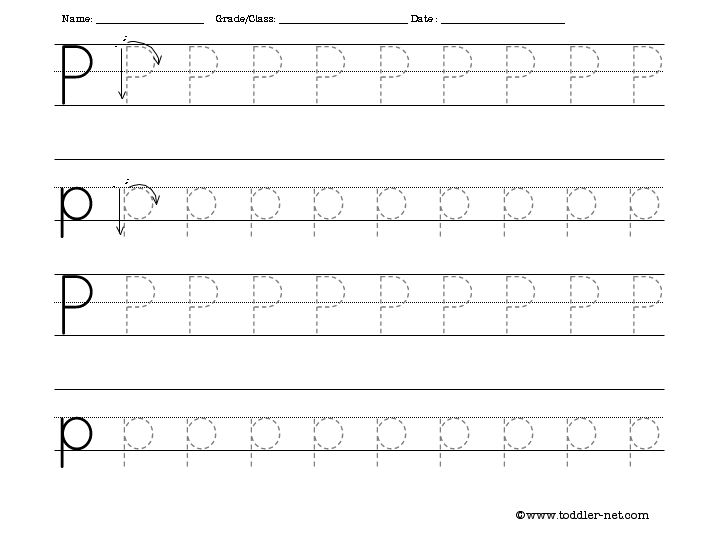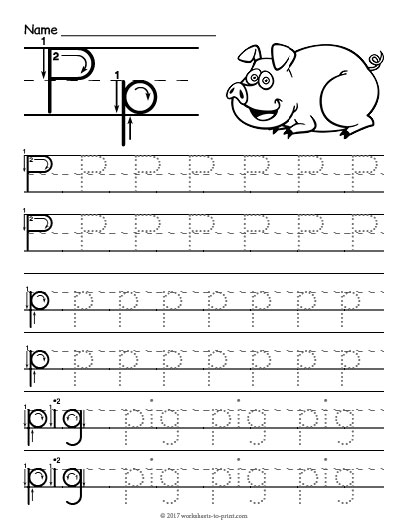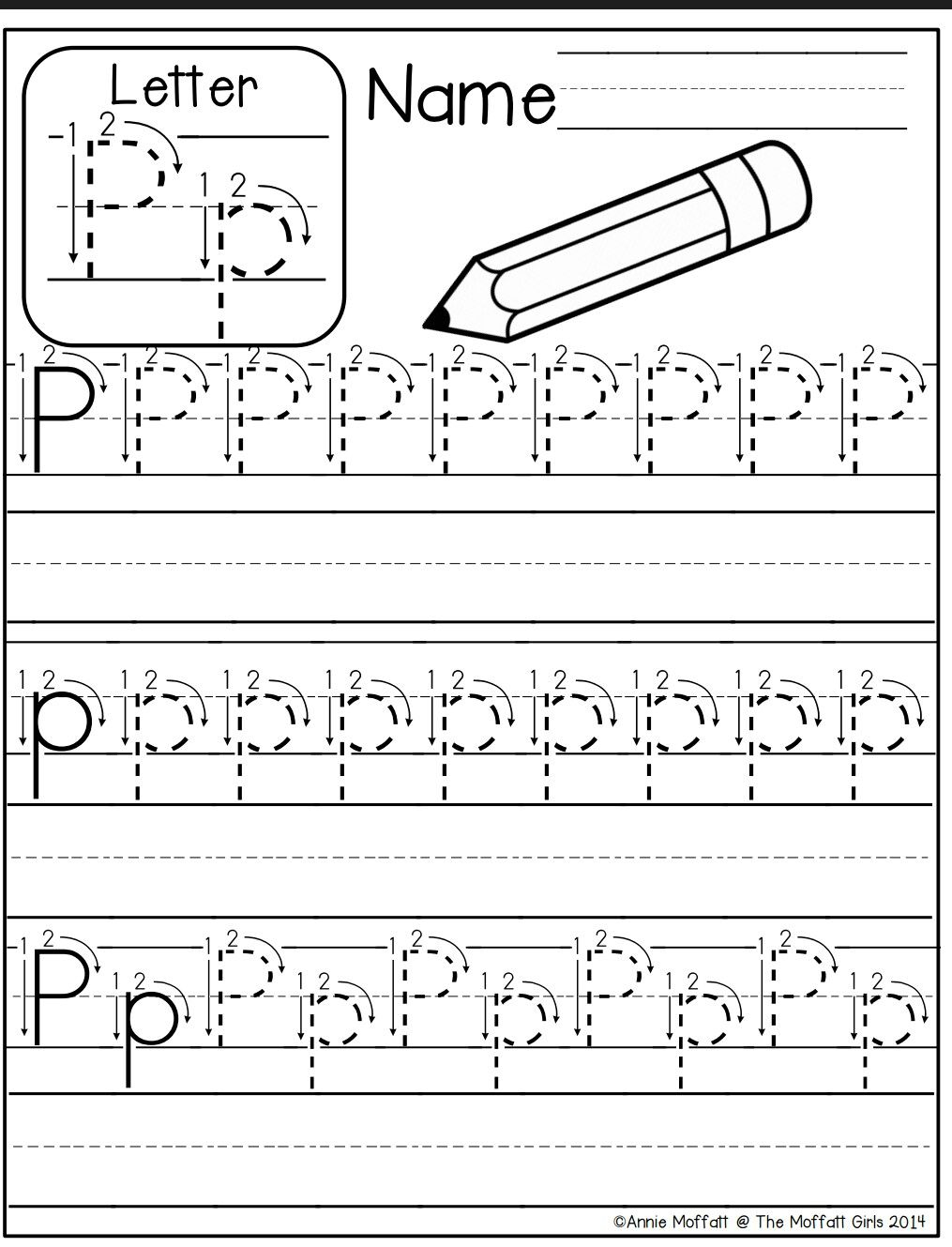Letter P Tracing
Are your kids having trouble with their handwriting or struggling with letter recognition? Are you a teacher looking for a fun and interactive way to help your students learn their letters? Look no further than letter p tracing!
Whether your child is just starting to learn their letters or needs a little extra practice, letter p tracing can be a great tool to help them improve their handwriting and letter recognition skills. While it may seem like a simple exercise, letter tracing can provide a number of benefits for young learners.
The main target of letter p tracing is to help young learners develop their fine motor skills, which is essential for writing and other activities. Additionally, letter tracing can help improve hand-eye coordination and build letter recognition skills, making it an all-around great exercise for early learners.
In this article, we'll explore some of the benefits of letter p tracing and provide tips and tools to make the most of this activity with your child or students.
What is Letter P Tracing and Who is it For?
Letter p tracing is a simple activity where children trace the letter "P" with a pencil or other writing tool. It's typically used with young learners who are just starting to learn their letters, but can also be helpful for students who need extra practice with handwriting or letter recognition.
As a parent or teacher, you can create your own letter p tracing worksheets or find them online. There are a variety of worksheets, games, and activities available to help make letter tracing fun and engaging for kids of all ages.
Why is Letter P Tracing Important?
Letter p tracing is important for a number of reasons. First and foremost, it helps children develop their fine motor skills, which are necessary for tasks such as writing, drawing, and manipulating small objects. Additionally, letter tracing can help improve hand-eye coordination and build letter recognition skills, which are essential for early literacy.
Practicing letter tracing can also help build confidence and self-esteem in young learners, as they see their skills improve over time. It's also a fun and interactive way to help children learn their letters and develop their creativity.
Tips and Tools for Letter P Tracing
If you're looking to incorporate letter p tracing into your child or student's learning routine, there are a few tips and tools you can use to make the activity more engaging and effective.
First, make sure to choose worksheets and activities that are age-appropriate and tailored to your child or student's skill level. You can find a variety of resources online, including free printable worksheets and educational games.
Additionally, make sure to provide plenty of positive reinforcement and encouragement as your child or student learns. Celebrate their successes and encourage them to keep practicing, even if they make mistakes along the way.
Apps and Worksheets for Letter P Tracing
If you're looking for specific tools and resources to help with letter p tracing, there are a variety of apps and worksheets available online. Here are some of our top picks:
1. ABC Tracing - This app provides a fun and interactive way for young learners to practice writing and tracing their letters, including letter P.
2. Twisty Noodle - This website offers a variety of free printable worksheets for letter tracing, including letter P worksheets for a range of ages and skill levels.
3. Handwriting Without Tears - This popular curriculum offers a variety of resources for teaching handwriting and letter recognition skills, including letter tracing worksheets and activities.
Questions and Answers about Letter P Tracing
1. What age is appropriate for letter tracing?
Letter tracing can be appropriate for children as young as three or four years old, depending on their readiness and individual skill level.
2. How often should children practice letter tracing?
It's generally recommended that children practice letter tracing at least a few times per week, for about 10-15 minutes each session.
3. Can letter tracing be used for children with learning disabilities?
Yes, letter tracing can be a helpful tool for children with learning disabilities or fine motor difficulties, as it provides a hands-on way to practice handwriting and letter recognition skills.
4. How can I make letter tracing fun for my child?
There are a variety of ways to make letter tracing fun and engaging for young learners. Try incorporating games, music, or art activities into your letter tracing practice, or offer rewards for a job well done.
Conclusion of Letter P Tracing
Letter P tracing can be a fun and effective way to help children develop their handwriting and letter recognition skills. By providing engaging worksheets and activities, offering plenty of positive reinforcement, and celebrating the successes of your child or student, you can make letter tracing a valuable part of any early learning curriculum.
Gallery
Letter Tracing Worksheets (Letters K - T)

Photo Credit by: bing.com / letter tracing worksheet worksheets alphabet printable letters pdf
Free Tracing Letter P Worksheet

Photo Credit by: bing.com / tracing letter worksheets writing worksheet letters number numbers practice trace printables sheets toddler pdf activities cursive printablee numb
Tracing Letter P Worksheet

Photo Credit by: bing.com / letter tracing worksheets worksheet printable letters handwriting kids alphabet start writing head pig practice print preschool kindergarten printables activities give
Tracing Letter P Worksheets | Dot To Dot Name Tracing Website

Photo Credit by: bing.com / dot
Tracing Letter P Worksheets - TracingLettersWorksheets.com

Photo Credit by: bing.com / handwriting learning cursive homeschooling tracinglettersworksheets lowercase
